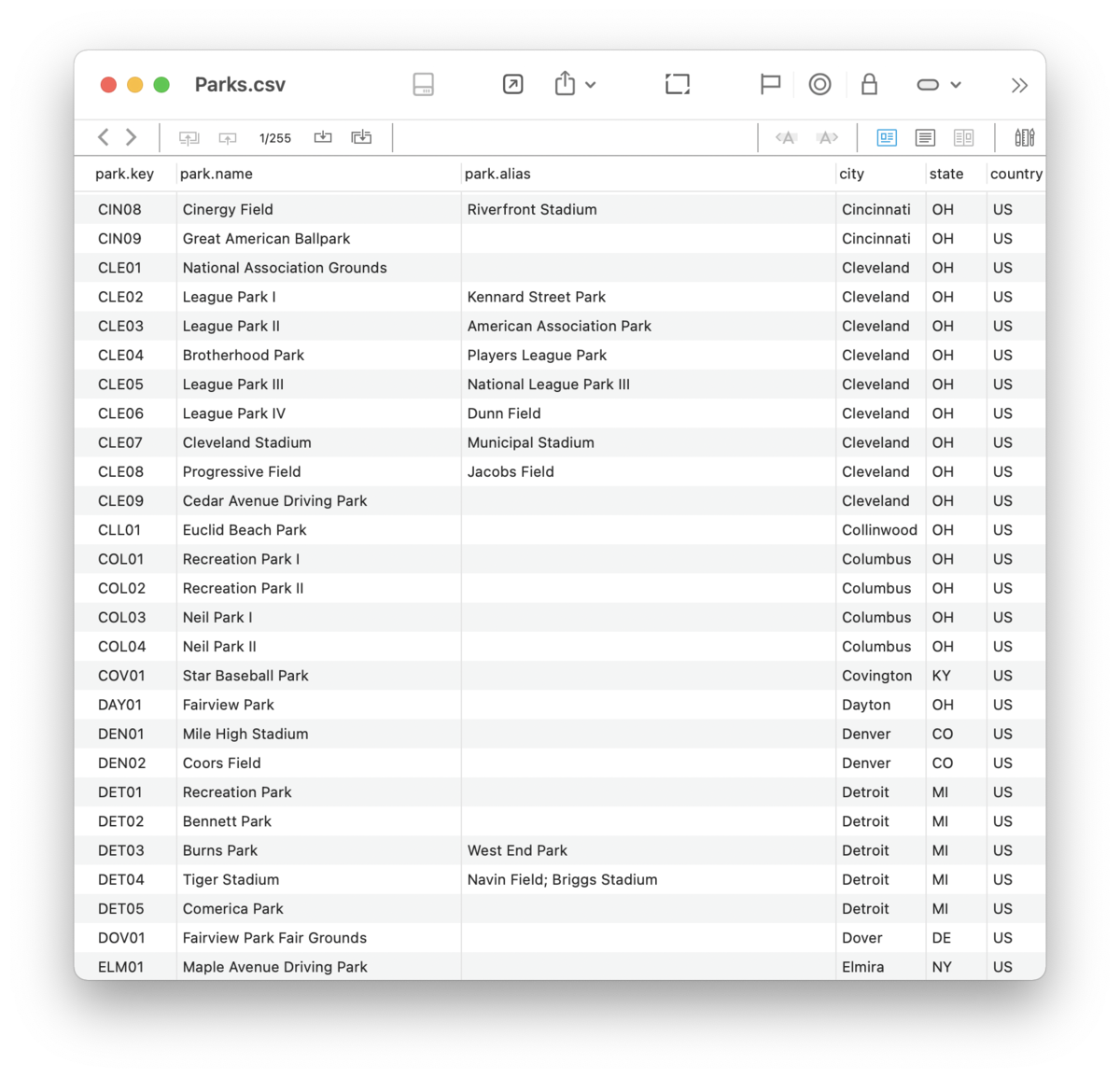|
|
Sheets |
|
Sheets are a specialized format used to store and display tabular data. For example, a sheet could contain a table of peoples' name, title, and department, your software titles and licenses, or the bibliographic information about research papers you're working with. Sheets are made up of records, defined by parameters you specify, and displayed as a form or columns. Sheets are created via Data > New > Sheet. If you import tab or comma-delimited files, e.g., CSV or TSV files, they will be imported and displayed as sheets. With these imported documents, you may need to define column headings, which you can modify at any time. When you create a sheet or edit the columns via the Column Editor, you will specify the column name and their type. An explanation of these data types can be found in the Data section of the appendix. PRO
Sheets can be displayed as a table or a form via the
View > Document Display menu or using the
Editing sheets works a bit differently than other formats. In Table view, click a cell to edit its content. To move to the next column, press the ⇥ Tab key. To finish editing and begin a new record, tap the ↩ Return key. This can make editing sheets a very quick process. In Form view, tabs and returns work more like other text-based formats. Add new and remove selected rows using the Add Record and Remove Record commands in the Tools > Sheets > Add Record menu. When working with a sheet, columns with links are handled differently. For cells containing a URL, hold the ⇧⌘ keys and click the link to open it in an external application while switching to it. For cells using an item link, the same keys open the linked document in a new tab or document window, depending on the General > Interface settings. Interface Navigation Bar: Above the view/edit pane, the Navigation bar displays the current record and the total number of records in the sheet. Clicking on this information opens a Go to record function so you can quickly jump to a specific record in the sheet. In addition, there are options to go to the first, previous, next, or last records. Editing Bar: To make working with sheets even more efficient, DEVONthink includes the Editing bar with some basic tools:
In Form view, there is one more option enabled in the Editing bar: Delete Selected Column allows you to delete a column. Just click on the column header you want to delete then this option is enabled. Context Menu: There are a few sheet-specific context menu items available when you're Control-clicking in a sheet.
In Table View, there are also Cut, Copy, and Paste commands. Pasting always adds as the last record in the sheet.
|

 and
and  buttons in the navigation bar. The table view is similar to standard spreadsheet views. Form view is similar to the record view e.g., in FileMaker. You can set the default view for sheets in the
buttons in the navigation bar. The table view is similar to standard spreadsheet views. Form view is similar to the record view e.g., in FileMaker. You can set the default view for sheets in the






